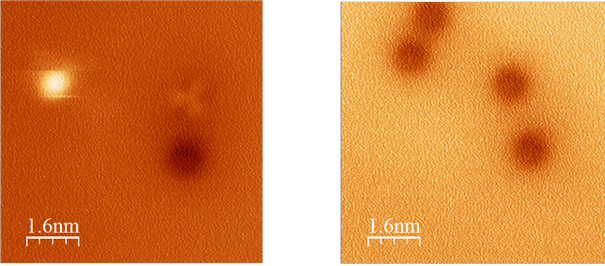Research
Biological processes involving molecular motions are numerous, and nowadays, scientists have developed adequate technics to describe them. A representative example of supramolecular motions induced by a light excitation is the cis to trans isomerization of a retinal dye which provides the common vision process.
The International Collaborative Laboratory For Supraphotoactive Systems develops research topics related to photoactivated molecules called “Diarylethenes”. This family of compounds shows a reversible photocyclization between two stable forms, the open form displaying three independent aromatic subunits and the close one showing a conjugated structure. Along with the photo-isomerization, physico-chemical properties also change (absorption, refractive index, conductivity…).

1) Fabrication of Photo-releasing agents
We recently engaged strong investigations on Diarylethene systems which undergo after cyclization a degradation concomitant with the releasing of an active principle (acid, alcohol…). Such a system is believed to be the next generation of acid generator or drug releasing agent. Proper molecular design, synthetic chemistry as well as knowledge of the excited states are required to fully understand the molecular behavior and to optimize their efficiency.

2) Photo-activation on surfaces
Fabrication of devices containing such photo-switching molecules for a daily use implies first to master its switching properties at the molecular level, when isolated on metallic surfaces (Au, Ag, Cu). Our International laboratory has for mission to study in detail the mechanism of molecular switching with Scanning Tunneling Microscopy (STM) and/or non-contact Atomic Force Microscopy (nc-AFM). Such a topic requires from chemists to develop suitable compounds to be deposited on metallic substrate (molecular engineering).
3) Synthesizing novel molecular machines: towards “smart nano-machines”
Molecular machineries are already used by Nature to achieve essential purpose in biological systems. The next challenge for mankind is to develop his own nano-machines. Electrically triggered rotation is one example of molecular machines achievements and has already risen thrilling questioning. Within this international frame, we target to synthetize novel molecular machines fuelled by two type of energy, an electrical and a photonic one. Such systems would allow us to design logic machines at the nano level.